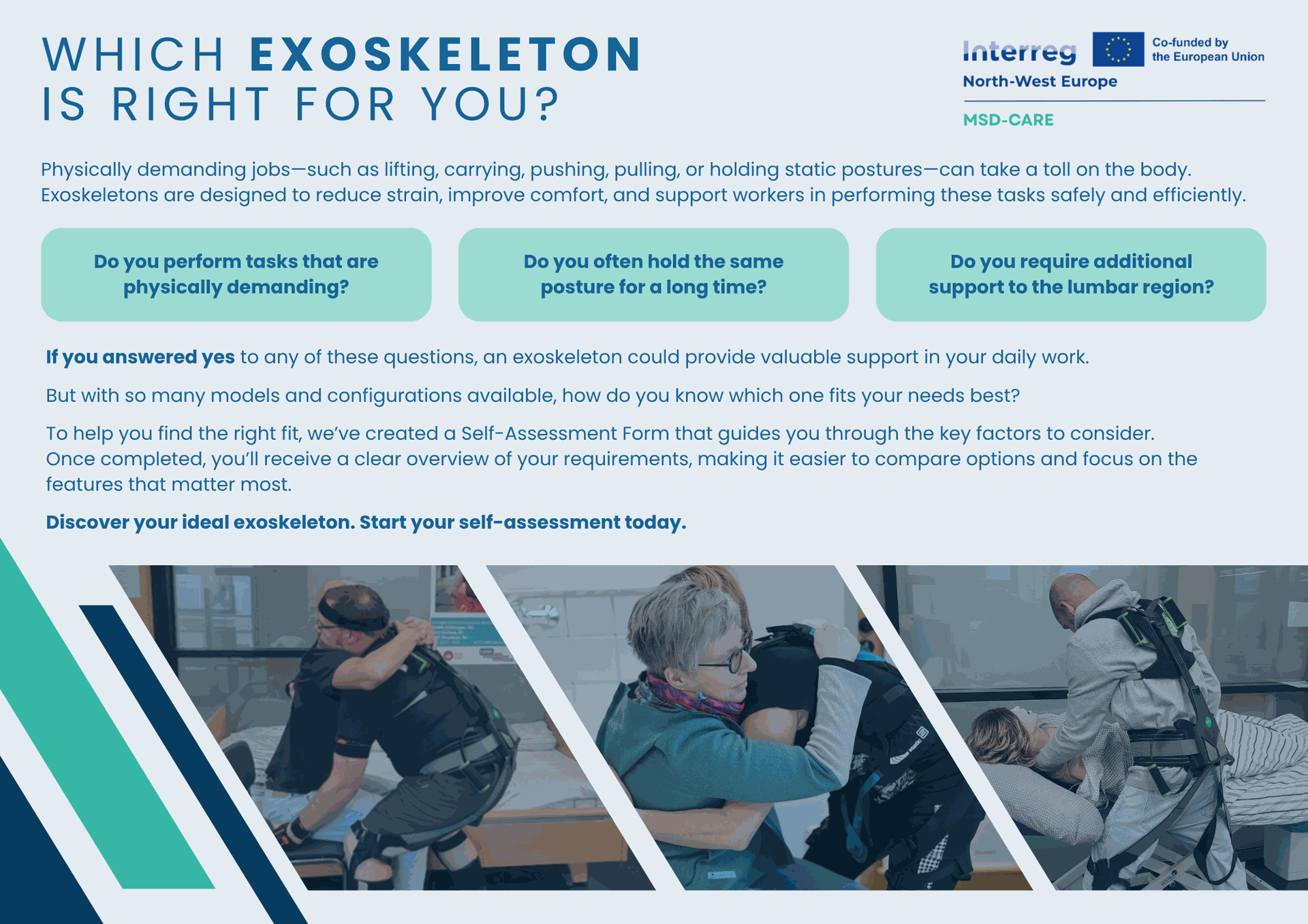Musculoskeletal disorders (MSDs) are a leading cause of long-term absence for healthcare workers across Europe. Nurses, carers, and therapists—who are predominantly female—are often required to lift or reposition patients heavier than their own body weight. These repetitive, physically demanding tasks can cause pain and fatigue, potentially leading to early retirement. With staff shortages reaching critical levels, supporting the workforce has never been more urgent.

Exoskeletons—wearable supports already used in industries like logistics, agriculture, and manufacturing—offer a potential way to reduce strain and support safer postures in care settings. While they are not yet widely implemented, early insights from the MSD-CARE project suggest they could help healthcare staff sustain their careers and wellbeing.
The MSD-CARE project, co-funded by the European Union’s Interreg North-West Europe (NWE) programme, has explored practical considerations for using exoskeletons in hospitals and care facilities. Through focus groups in Germany, Ireland, and the Netherlands, the project identified key factors for adoption, including comfort, hygiene, ease of use, and integration into daily workflows.
To support the adoption of exoskeletons in the healthcare sector, MSD-CARE has translated the results of their work into two products designed for key stakeholders driving their implementation. These tools build on insights captured in the MSD-CARE sustainability report, which outlines a roadmap to sustain the project’s impact and highlights trends, opportunities, and areas for action in the field of exoskeletons:
An infographic for Industry and Manufacturers: Highlights design priorities to ensure exoskeletons are practical, safe, and appealing for healthcare teams, while pointing to opportunities for market expansion.
Exoskeleton Adoption Protocol for Healthcare teams: Helps hospitals, care facilities, NGOs, and informal caregivers assess whether exoskeletons could fit their needs and which features to prioritise.
The protocol builds on a 2020 discussion paper from the European Agency for Safety and Health at Work (EU-OSHA), which outlined key characteristics defining exoskeleton use. To tailor the tool for the healthcare sector, the MSD-CARE partners expanded it with additional guidance on factors to consider when selecting the most suitable exoskeleton.
These resources aim to guide ongoing work, helping healthcare providers experiment safely and inform future developments. With careful implementation, exoskeletons could become one of several solutions to ease physical strain and support the longevity of Europe’s healthcare workforce.
While much work remains, the MSD-CARE consortium is determined to continue advancing this vital research.
“Healthcare is ready for exoskeleton innovation, driven by the real needs of nurses and carers,” said Prof. Dr. Shiney Franz, MSD-CARE Project Coordinator from HAWK University of Applied Sciences. “We see clear potential in exoskeletons to support healthcare staff, and we invite collaboration from healthcare organisations, researchers, and industry to build on these foundations together.”
To discuss collaboration opportunities or how these insights can be applied in your organisation, reach out to a member of the MSD-CARE team today.
About MSD-CARE
MSD-CARE is co-funded by the European Union’s Interreg North-West Europe (NWE) programme, with the overarching objective of overcoming the barriers to the adoption of innovations preventing musculoskeletal disorders (MSDs) among NWE caregivers. The project is led by HAWK University for Applied Science and Arts Hildesheim (Germany), in partnership with Roessingh Research and Development (Netherlands), and the University of Galway (Ireland).
